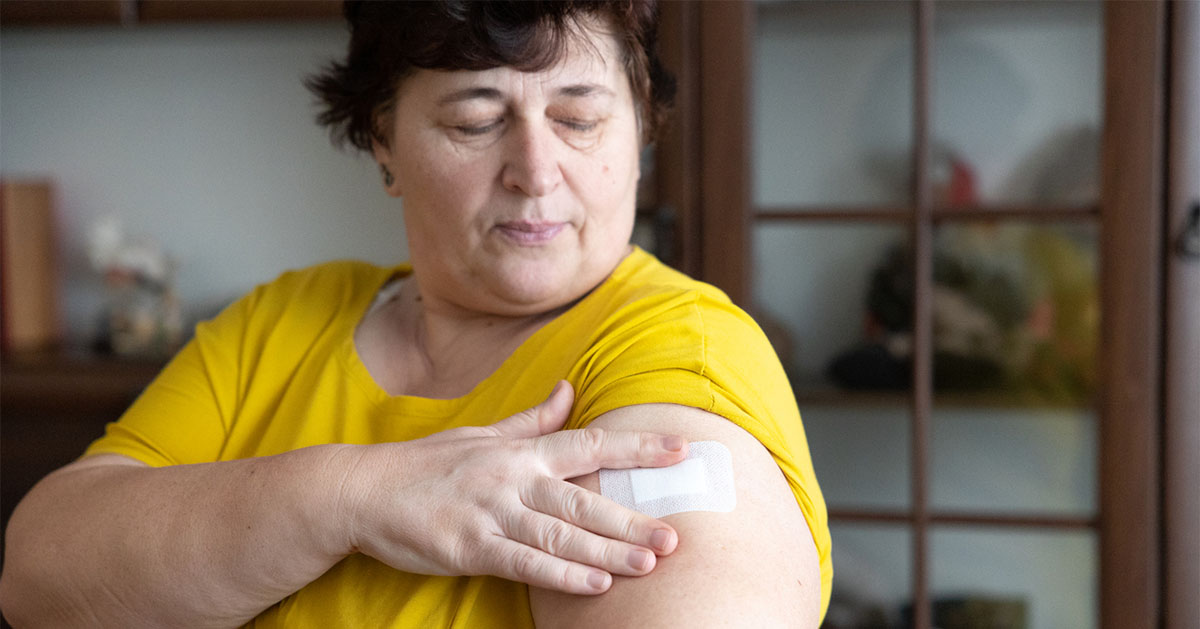People with diabetes want to be looked after by healthcare professionals who know their history and expect that everyone involved in their care will have access to their medical records and will be sharing appropriate clinical information with each other. Many of these people also want to share in the responsibility for their own care and to have the knowledge, information and resources to do this.
Within diabetes care in Scotland, we are attempting to harness the power of modern information technology to meet these challenges.
SCI-DC
The use of a unique identifier, the Community Health Index (CHI) for all healthcare episodes throughout the NHS in Scotland allows clinical data for all people with diabetes from a wide variety of disparate sources to be pulled together into one comprehensive database, SCI-DC (Scottish Care Information – Diabetes Collaboration).
This is now in routine use across Scotland, acting as a comprehensive disease register and clinical database and serving as a common information gateway for all members of the multidisciplinary clinical team. The database allows free-flow and sharing of appropriate clinical information between all those involved in supporting people on their journey of care. It is a key tool in facilitating more integrated diabetes care in day-to-day clinical practice for over 220000 people with diabetes, providing the shared electronic clinical record for diabetes care in all 14 Health Board Areas as well as providing comprehensive data for audit and research.
Data population and updates
Data are automatically collected on a nightly basis from the hospital outpatient clinic system – SCI-DC Clinical – and from primary care IT systems. Almost all practices in Scotland are contributing to the shared record in this way. These automated downloads of a nationally agreed “diabetes dataset” from practice IT systems to SCI-DC allow colleagues working in secondary care to view relevant primary care data, including an accurate and up-to-date picture of the individual’s medication history. This feature alone has proved to be an important clinical governance tool.
Access to data is encrypted, password protected and only available over the secure NHS intranet to authenticated users. Within general practice, a nominated administrator in each practice is responsible for providing user accounts to appropriate members of their teams.
SCI-DC has been working with all four of the primary care IT system suppliers used by Scottish practices to provide the functionality to automatically “back-populate” practice systems with data. This works by a nightly analysis and transfer of data contained on the SCI-DC database but found to be absent from the practice’s system. This is currently in full use in practices that use EMIS and Ascribe systems, and is being rolled out to Vision and GPASS systems over the coming months. For example, retinal screening data and data from hospital review appointments can automatically populate the practice system, avoiding laborious manual entry by practice staff. When combined with SCI-DC’s automated links to biochemistry labs, this provides invaluable support for ensuring that data is in the appropriate place for the QOF. Work on clinical portals and single sign-on technology should, in due course, provide a direct, single-click link from an individual’s electronic primary care record into their SCI-DC data summary.
Now that community pharmacists are connected to NHSnet, it will be possible for them, with patient consent, to access and contribute to the shared SCI-DC record, significantly enhancing the effectiveness of their involvement in the care process.
Work is currently in progress to link all the regional biochemistry laboratories to SCI-DC.
Viewing and entering clinical data
Entering via the home page of the area diabetes Managed Clinical Network (MCN) website, clinicians have access to the list of all individuals on the database for whom they are clinically responsible. The “practice overview” section provides lists of the people registered at that practice in the system, broken down by diabetes type, and including lists for those with pre-diabetes states. Clicking on a particular name allows access to that individual’s data. Patients can also be found by searching via surname or CHI.
An individual’s data are shown in the form of a clinical summary screen, with the most recent data displayed as the initial view, but with all historical data also easily accessible, displayed in tabular and graphical form, allowing easy assessment of longitudinal trends in, for example, blood pressure or HbA1c. The data are presented in a form that can be easily understood both by clinicians and their patients, and is colour-coded to indicate readings that lie out of the treatment target range (Figure 1).
Agreed clinical protocols and evidence-based guidelines are available in an online handbook linked to an individual’s specific clinical information in such a way that clicking on the hyperlink relating to any clinical data on the summary automatically opens the handbook at the relevant section, aiding the clinician with decision-making.
The clinical review screen provides an easy-to-use method of directly adding data to the record, including the facility to allow all clinical users to contribute to the individual’s history by adding free-text comments, for example allowing one to alert colleagues to particular issues that were affecting someone’s health or glycaemic control – an invaluable communication facility when people are receiving shared care between a hospital and general practice. These are displayed as part of an “electronic notebook”, which also contains all clinical comments from hospital diabetes clinic letters. In addition, a diary, listing all the person’s diabetes-related healthcare contacts, allows their journey of care to be tracked.
Work is ongoing to implement new functionality tailored to meet the needs of colleagues working in paediatric diabetes, specialist nursing, inpatient diabetes care, dietetics and diabetic foot care. This will provide specialists with the specific and detailed requirements that they need to support their clinical practice. In turn, it will allow the collection, storage and display of an even more comprehensive range of clinical data within the SCI-DC network.
Tracking diabetes-related complications
Foot risk assessment
The SCI-DC foot risk assessment tool (Figure 2) provides a quick and simple mechanism for recording the findings of foot screening and then automatically calculates and stratifies the person’s risk of developing foot ulcers, facilitating decisions about the appropriate level of podiatry care to offer (Leese et al, 2006).
Retinopathy screening
The SCI-DC system acts as the call or recall register for the National Screening Programme for Diabetic Retinopathy and also houses grading results and digital eye images. It is intrinsically linked to the bespoke software that supports the taking and grading of the retinal images. Practices are responsible for ensuring that all people appropriate for retinal screening are included in the SCI-DC register and that those on the register for whom retinal screening would be inappropriate, for example due to blindness or infirmity, are “excluded” from the recall system. A specific diabetic retinopathy screening section of the practice’s SCI-DC website makes this process straightforward.
Facilitating clinical audit
Clinical audit, at practice, regional and national level, is transformed by SCI-DC. It provides instant, up-to-date feedback to clinicians, showing aggregate practice-specific data for a variety of standard process and outcome variables, comparing these with regional averages and, also, detailed patient-specific data highlighting process, outcome and reversible risk-factor analyses. The system allows users to interrogate these data further, identifying lists of named individuals who, for example, fall outside a particular audit standard. In addition to this, the practice audit tool enables practices to search for all people falling within certain parameters. Users can perform a “general audit”, allowing measured values such as blood pressure, HbA1c level and BMI to be queried. A “contact audit” list can also be generated to view clinic attendance and screening dates. For both of these options, patient lists can be broken down further by age range and diabetes type.
Lastly, a “deteriorating value” audit can be performed to view all individuals whose last two recordings in a particular clinical indicator show a significant deterioration in control. Using this functionality, SCI-DC is particularly useful in identifying and focusing on those at highest risk of developing complications or who have not undergone monitoring and complication screening assessments within agreed time-scales. Work is ongoing to incorporate sophisticated commercial audit software into SCI-DC, which will add much more detailed audit functionality, and development plans also include the addition of sophisticated clinical alerts and decision support.
Diabetes MCNs in Scotland are charged with ensuring the provision of safe, effective, integrated and equitable diabetes services across primary and secondary care within their Health Board area. The MCNs use SCI-DC as a key resource in allowing them to gain a clear picture of the diabetes burden in their community along with the process and quality of care provision and to demonstrate areas where improvement or investment is required. Comparative data can be fed back to practices or individual clinicians, perhaps pinpointing areas for further analysis or improvement.
The rich data that MCN Clinical Leads can harness through SCI-DC can also act as a powerful tool in discussions and negotiations with Health Board budget holders and strategic decision-makers. At a national level, aggregate data are included in the Scottish Diabetes Survey, which annually collates and compares detailed and extensive data on all people with diabetes in Scotland (Scottish Diabetes Survey Monitoring Group, 2009). This annual audit allows a systematic analysis to be made, at population level, of progress towards national framework standards and targets (NHS Scotland, 2006) and to alert the Government to the scale of the “diabetes challenge”.
SCI-DC has the capacity to provide a comprehensive database for research purposes at both local and national levels. It supports the Scottish Diabetes Research Network in two ways: by providing anonymised data for nationwide epidemiological studies and by acting as a register of people who have given consent to be contacted for involvement in clinical trials.
Supporting self-care
This description of SCI-DC has demonstrated how the system facilitates communication between healthcare professionals. But how are we rising to the challenge to support, inform, empower and communicate better with people with diabetes? The influential report Building a Health Service Fit for the Future, published in Scotland in 2006, pointed out that the average person with diabetes will spend 3 hours with healthcare professionals in a year and take care of themselves for the remaining 8757 hours (Kerr, 2006).
The Diabetes UK report, The Diabetes Information Jigsaw (Association of the British Pharmaceutical Industry et al, 2006), made similar observations, stating that: “As much as 95% of diabetes care is self-care and, over the course of a lifetime, people with diabetes will need a variety of skills and the knowledge to enable them not only to live with their condition on a day-to-day basis but to cope when crises occur. However, many people still find that the information and support that they require to maintain their health is not readily available”.
These challenges make a person-focused use of SCI-DC an obvious development area. Clinicians can use SCI-DC to demonstrate to people with diabetes trends in their glycaemic control in an easy-to-follow graphical format (Figure 1), and can also show them their retinal screening photographs – both of these helping with understanding and adherence. Specific treatment and improvement goals (agreed during the consultation) can be included in a summary record along with details of current control data trends and other information. This can be printed off at the end of the consultation and given to the individual to take away (Figure 3).
One of the most exciting and challenging targets set in the Scottish Diabetes Framework: Action Plan (NHS Scotland, 2006) is to explore ways of enabling people to gain direct access to their own diabetes electronic healthcare records in such a way that they can understand and use the data to enhance their self-care. Following extensive development work, a pilot is now being undertaken to deliver this, expanding on the principles underlying the patient-held summary record and making these data and information available to people online, in a user friendly but secure environment, using the well-established technology that underpins digital banking and the Citizen’s Account processes, used widely in the local authority setting.
Other related initiatives in the pipeline include the development of ways for people with diabetes to download data from their home monitoring devices into the SCI-DC record and the use of SCI-DC combined with NHSmail to send automated text messages to individuals in support of their specific clinical needs, to reinforce messages and goals agreed during clinical reviews, for example. The results of a well conducted randomised controlled trial of such an approach demonstrated significant benefits in self-efficacy, adherence and other indices (Franklin et al, 2006).
Conclusion
A BMJ editorial for a themed issue on chronic disease management discussed how healthcare providers must ensure that people with chronic diseases receive the best treatment regimens to control disease and mitigate symptoms, as well as the information and support needed to effectively self-manage their health (Wagner and Groves, 2002). The authors went on to state: “Evidence shows that we are not doing very well, and that the fault lies less in ourselves and more in our systems of care… evidence also shows that changes to the organisation and delivery of care can improve the quality of care and certain outcomes of chronic disease”.
SCI-DC is assisting clinicians caring for people with diabetes in Scotland to go a long way towards achieving these goals.





Increased risk of new-onset heart failure in over-65s suggests caution is required before prescribing pregabalin for painful diabetic neuropathy.
14 Aug 2025